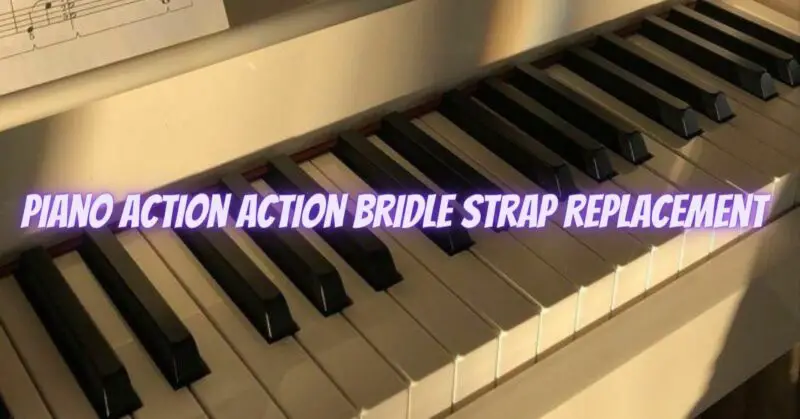The piano action bridle strap is a crucial part of the piano action mechanism that connects the hammer shanks to the backchecks, allowing for proper key movement and control. Over time, due to wear and tear or environmental factors, the bridle strap may become damaged or stretched, affecting the piano’s playability and responsiveness. In this article, we will explore the significance of the piano action bridle strap, signs that replacement is needed, and the steps involved in this essential maintenance procedure.
Understanding the Piano Action Bridle Strap: The bridle strap is a thin, sturdy strip of material, often made of leather or nylon, that connects the back end of the hammer shanks to the backchecks. When a key is pressed, the bridle strap pulls the backcheck, which releases the hammer to strike the string. Once the key is released, the bridle strap pulls the hammer back to its resting position, allowing for quick repetition and control over the piano’s dynamics.
Signs That Replacement Is Needed:
- Spongy or Sluggish Keys: If the keys feel spongy, sluggish, or do not return smoothly after being pressed, it may indicate that the bridle strap has stretched or is not functioning correctly.
- Inconsistent Key Response: Uneven key response, with some keys feeling different from others, can be a sign of bridle strap wear.
- Excessive Key Dip: If the keys dip too far or not far enough when pressed, it might be due to a bridle strap issue.
- Visible Damage: Physically inspect the bridle straps for signs of wear, fraying, or breakage.
Replacing the Piano Action Bridle Strap: Replacing the bridle strap is a delicate procedure that should be performed by a qualified piano technician. Here’s an overview of the general steps involved:
- Access the Action: The technician removes the piano action from the piano to access the bridle straps.
- Remove the Old Bridle Straps: The worn or damaged bridle straps are carefully removed from each hammer shank and backcheck.
- Selecting Replacement Straps: The technician selects new bridle straps made of high-quality material that matches the original specifications.
- Installation: The new bridle straps are threaded through the hammer shanks and securely attached to the backchecks.
- Alignment and Adjustment: The technician ensures that each bridle strap is correctly aligned and adjusted to achieve the desired key dip and response.
- Testing: After installation, the piano action is tested to ensure that all keys respond smoothly and consistently.
- Reassembly: Once the replacement and adjustments are complete, the piano action is reassembled and installed back into the piano.
Conclusion: The piano action bridle strap plays a critical role in the piano’s playability and responsiveness. If you notice any issues with the touch or response of your piano keys, including sponginess, sluggishness, or inconsistency, it may be time to have the bridle straps inspected and replaced if necessary. As with all piano action maintenance, it is essential to entrust this task to a qualified piano technician who possesses the expertise and experience to ensure that the replacement is done correctly. Regular maintenance and periodic bridle strap replacements will help keep your piano in optimal condition, providing years of enjoyable playing and preserving the instrument’s overall performance.


